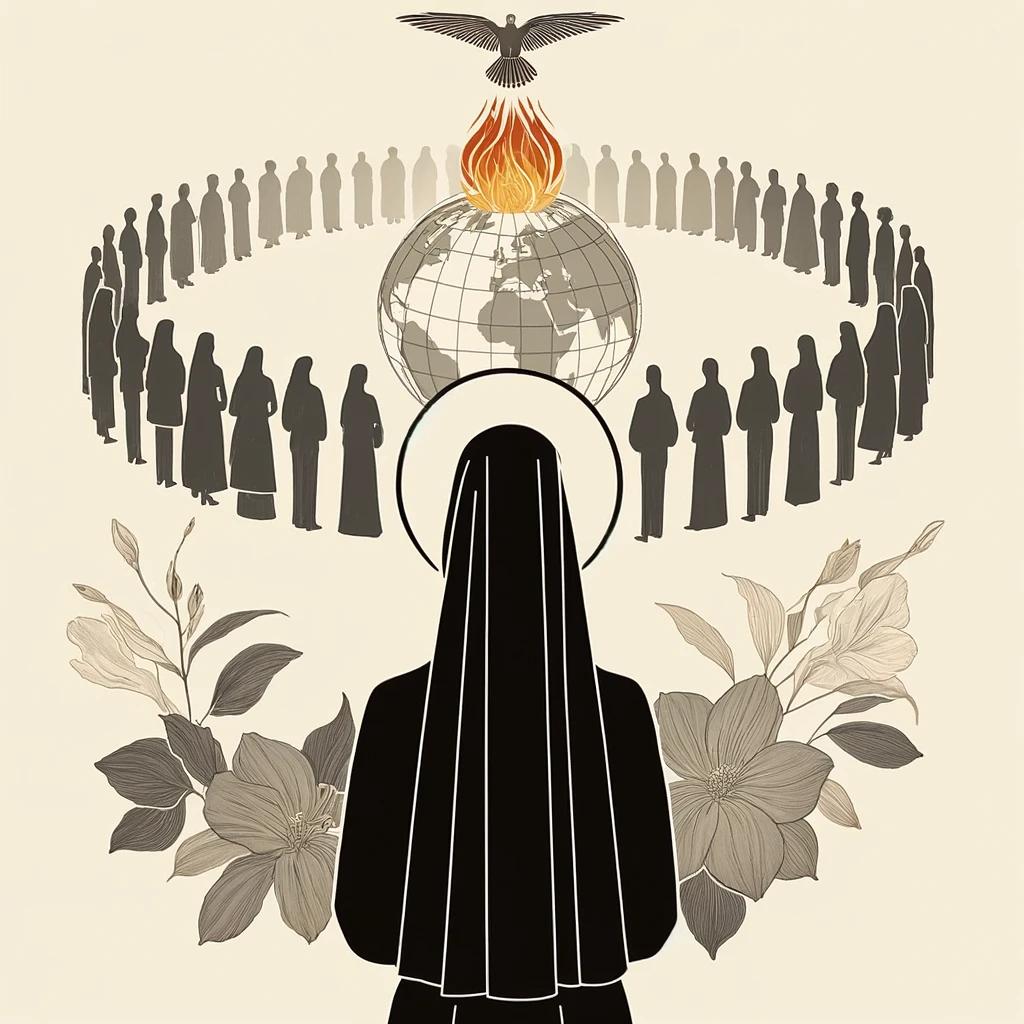
Marvelous is God in his saints
As the Second Vatican Council teaches “God manifests to men, in a living light, his presence and his face” (Lumen Gentium 50).
Saints, before being protectors to be invoked, before being models to be imitated, are signs of God’s presence in life and of his passage through human history. And God’s passage is always a prodigy. The saints constitute a wondrous and most transparent sign of the presence of Christ, who is alive and at work in history. Miracles are therefore a reason for credibility, joy and praise to God, because he always works for the good of mankind. In recent days, as we have already reported, Pope Francis received Card. Marcello Semeraro, Prefect of the Dicastery of the Saints, authorised the publication of the decree recognising a miracle obtained through the intercession of Blessed Elena Guerra, the great Lucchese mystic of the Holy Spirit. When we speak of miracles, we must not think that the Blessed and the Saints are miracle workers. Jesus rebuked the Pharisees who asked him for a sign from heaven, as proof of his divine identity: “Why does this generation ask for a sign? Truly I tell you, no sign will be given to this generation” (Mk 8:11-12). The first sign is his love, his consistent life, his obedience and relationship with the Father. In the Saints, it is not miracles that prove their holiness, but their life of faith, hope and charity. The canonical norm that requires a miracle for beatification and canonisation is the result of an ecclesiastical practice dictated by prudence, in order to be able to proceed to inscribe the name of a servant of God in the roll of the Saints. In the miracle, an event that cannot be explained by science and that exceeds the laws of nature, obtained through faith and the intercession of the blessed, the Church seeks divine confirmation of its judgement, on the life of the witness, before proposing him as a model of life and mediator. Let it be clearly understood that it is not the miracle or miracles that make a saint, but their testimony of life and the good fragrance of the theological virtues that they concretely exercised. Thanks to their faithfulness, they can intercede with the source of grace. The request for a miracle is only an ecclesiastical norm, which the Pope can change or allow a derogation from. After these clarifications, we ask ourselves what is the miracle that Pope Francis has officially attributed to the intercession of Blessed Elena Guerra. From the website of the Dicastery we take the following narration.
Miraculous Healing
On 5 April 2010, Mr Paulo G., while pruning a tree, fell from a height of about 6 metres. He was taken to the hospital in Uberlândia, in a state of unconsciousness, where he was diagnosed with a very serious cranial-brain injury, with suspected brain death and systemic complications such as pneumonia and hepatitis. The following day he underwent craniotomy and decompression surgery with frontal-basal lobectomy. After the operation he was transferred to intensive care with a reserved prognosis. On 10 April, a CT scan showed that the patient’s condition had deteriorated to such an extent that his death was expected. On 11 April, the attending physicians interrupted the sedation that had been holding the patient for 24 hours, and the patient showed no signs of neurological reaction the next day. On 15 April the protocol to declare brain death was opened. From 10 to 27 April the patient hovered between life and death. Informed of his extremely serious condition, the members of the local Charismatic Renewal began to organise prayer times for his recovery. From 17 April, they addressed their invocations to Blessed Elena Guerra and, considering the persistence of the man’s serious condition, prayer was intensified and extended for nine consecutive days. On 27 April, after 21 days of hospitalisation, the doctors noted an improvement in the patient’s condition, who responded to painful stimuli and breathed spontaneously. Two days later, he was transferred to the surgical ward, starting first passive and then active physiotherapy. On 14 May, the patient was discharged in good condition. Further checks, carried out monthly and then annually, showed that the patient was in good health and that there were no changes as a result of the trauma.
Sources
